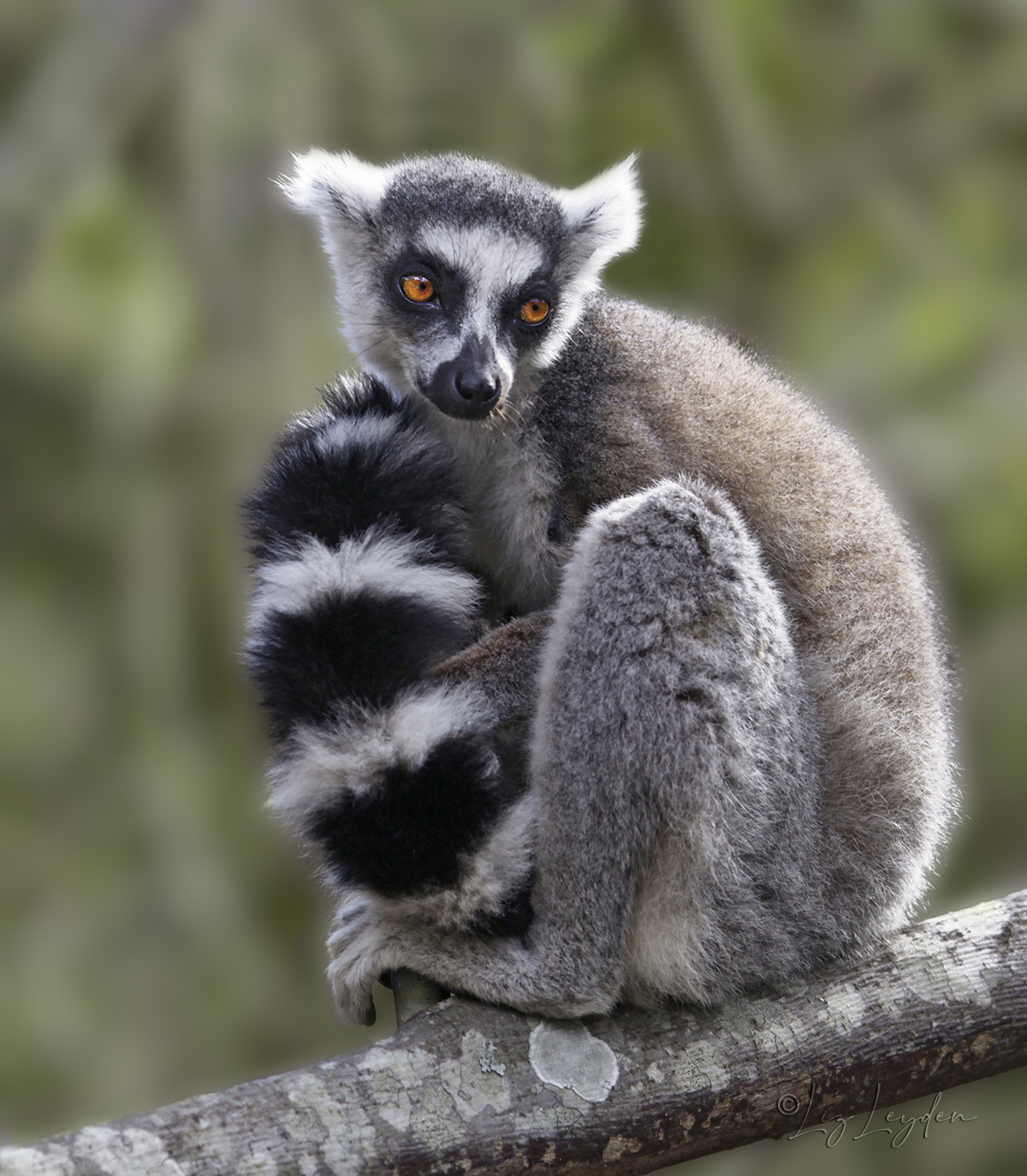A wild Ring-tailed Lemur, Lemur catta, sitting on a branch in the Canyon des Makis, Isalo National Park, Madagascar. These Lemurs, with two other species, are very bold and obliging at the picnic spots in Canyon des Makis. Although visitors are not allowed to feed them, they no doubt hope for accidental dropping or crumbs, and aren’t averse to stealing picnic food is you aren’t very alert!
Ring-tailed Lemurs get their names from the alternating dark and light bands on their tail – which is longer than their bodies. Male lemurs rub scent from their anal glands onto their tails, then wave their tails at rivals, a practice known as ‘stink-fighting’. They also use their scent to mark their territory.
They are the best known species of Lemur, partly because of King Julien in the Madagascar animated movie, but there are over 100 species of Lemur, all native to the island of Madagascar.
Ring-tailed Lemurs eat fruit and leaves, particularly Tamarind leaves. They live in rainforests, preferring to forage on the ground or in bushes rather than going into the upper canopy. They live in troops, led by a matriarch.
They are IUCN Red-listed as ‘endangered’ mainly because of habitat destruction, but also because of hunting.
This photo is copyright © Liz Leyden. All rights strictly as agreed in writing with the author or her agent.
My photo of a Ring-necked Lemur is available for sale as various types of wall art, and as home and personal accessories, from my gallery at Pixels.com.
It is also available to purchase as a stock photo from my portfolio at iStock.


